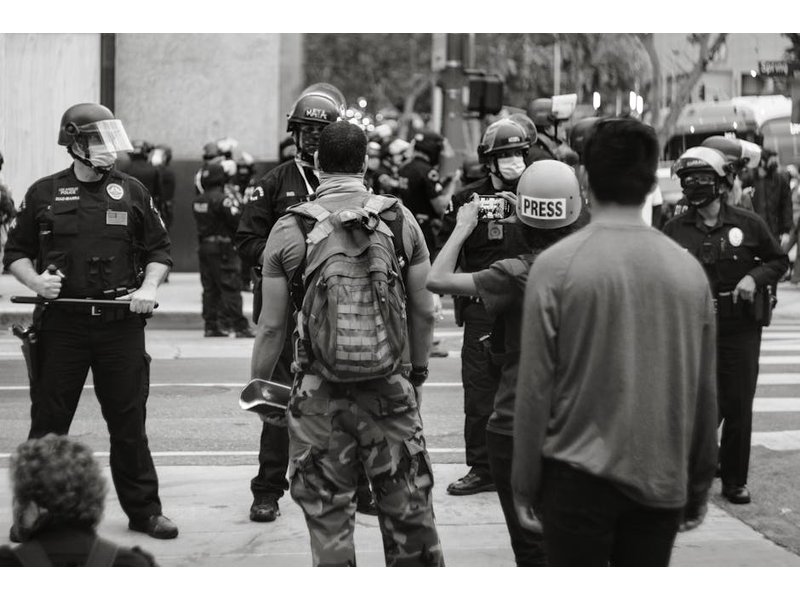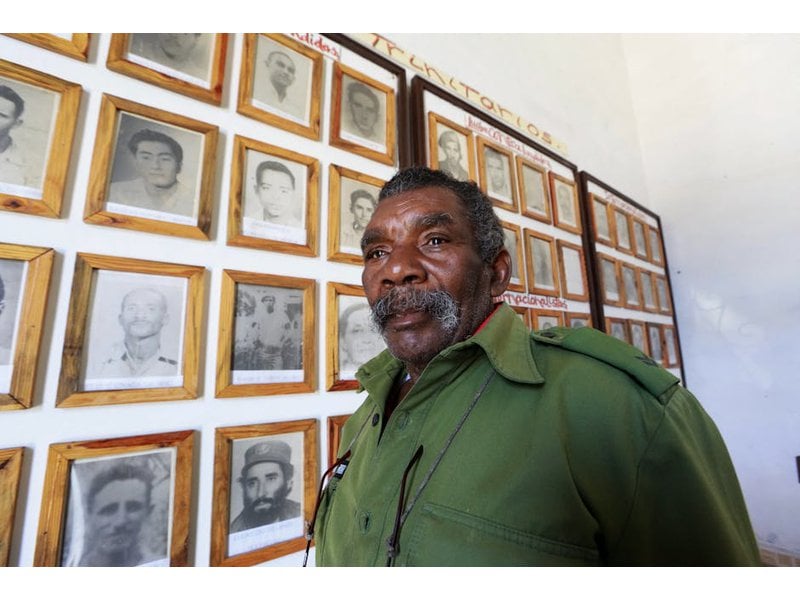029 symbolic reclamations

"Certain types of acts may be carried out to demonstrate a creative alternative to the disputed existing use or ownership of the territory in question. Among the forms this may take are the planting of seeds, plants or trees, the cultivation of neglected or seized land, and the construction of a building whose intended use runs counter to existing and future policies for the area. For example, in October 1962 demonstrators of the Committee of 100 in Britain, protesting nuclear weapons, planted seeds at the edge of the R.A.F. V-bomber base at Honington, England, as a symbol of their desire to reclaim the land for constructive civilian use.146"...
Potentially awesome partners


High scoring campaigns using this method
Historical cases from the Nonviolent Action Database that used this method
Australian citizens force end to nation’s military participation in Vietnam War through Vietnam Moratorium Campaign 1970-1971
Australian citizens offered little opposition to their country’s early involvement in the Vietnam War. Opposition came from groups like Youth Campaign Against Conscription (YCAC), founded in 1964, and Save our Sons (SOS) , founded in 1965. Other earl...
Greek campaign to stop construction of coal plants 2008-2010
In July 2007, the Ministry of the Environment, Physical Planning and Public Works published the “General Spatial Planning and Sustainable Development Framework” with no plans for new coal plants in Greece. A month later, the Ministry of Development p...
Larzac peasants campaign to block expansion of military camp (The Battle of Larzac), 1971-1981
The plateau of Larzac is a limestone karst plateau located in the southern Massif Central area of France, extending between Millau (Aveyron region) and Lodeve (Herault region). The area is mainly agricultural and the economy relied mostly on sheep br...
Kumaon villagers campaign against British forest regulations, 1916-1921
From 1916 to 1921, villagers in Kumaon in northern India set hundreds of forest fires to protest the colonial British state’s increasing regulations of the natural environment.\n\nRural residents of Kumaon depended on forests as a source of firewood ...
The Green Belt Movement defends the Karura Forest in Nairobi, Kenya, 1998-1999
The Karura forest is an urban 2500 acre forest in Nairobi. The Kenyan government had a common practice of land grabbing or secretly selling public lands to private companies and political allies. Wangari Maathai, who later was awarded the Nobel Peace...
Ecuadorians defend their land against mining, 1995-2007
Residents of Junin faced the first assault on their land in the early 1990s, after the Ecuadorian government signed a contract with Bishi Metals, a subsidiary of Mitsubishi. The contract allowed the mining company to prospect in and around Junin, a c...
British Ramblers campaign for greater access to right of ways and the right to roam (1985-2000)
The enclosure system involved fencing off plots of arable land. The land would then be deeded to an individual or group of owners who could use it as they saw fit. Despite slowly losing access to the commons, commoners preserved their access to right...
Maori New Zealanders occupy Raglan Golf Course, win back land rights, 1975-1983
During World War I, the New Zealand government seized burial grounds and traditionally valuable land from the Tainui Awhiro people to build an air base and bunker. Ten years after the end of the war, in 1928, the Public Works Act codified the governm...
Times Beach residents win fight for relocation from contaminated dioxin sites
Between 1970 and 1976, Russell Bliss used a toxic mixture of motor oil and dioxin to spray the unpaved roads in Times Beach, MO. The community hired Bliss, a career waste disposer, to reduce its dust problem. Unbeknownst to residents of the small tow...
Women form peace camp to protest housing of cruise missiles at Greenham Common, 1981-1993
Greenham Commons outside Newbury, England was purchased in 1939 by the Newbury District Council for the public use of Newbury inhabitants, including the collection of firewood. In 1941 this area was requisitioned by the Air Ministry for an airfield, ...
Low scoring campaigns using this method
Historical cases from the Nonviolent Action Database that used this method
Gazans March for the Right to Return to Their Homes, 2018-2019
From 30 March 2018 to 26 December 2019, Gazans protested at the Israeli border every Friday for the right of Palestinian refugees to return to their homes and land that they had been displaced from since 1948. This series of demonstrations is known n...
Maori resistance to British land seizure at Parihaka, New Zealand, 1879-81
The Taranaki region of present day New Zealand spreads from the central plateau of the North Island to the western coast. The Maori people, indigenous to the region, once inhabited it and the surrounding areas. By 1860, New Zealand had been a colony ...
Prisoners occupy Attica Correctional Facility for just treatment, 1971
Editor's Note: We recognize that the inclusion of this case in a database of nonviolent action may be controversial because of the campaigner violence at certain points during the campaign. However, we have concluded that the campaigner violence was ...
University of California Students Oppose Tuition Hike, 2009
In the fall of 2009, the University of California Board of Regents met at UCLA to discuss and vote for a tuition hike necessary for them to deal with shrinking budget and spending cuts across the board. The Universities’ budget deficits were associat...



